
Return to Iwo Jima: 75 years after US-Japan battle, what is the island like today?
- With human remains still being found, the Japanese island is covered in sobering reminders of its bloody past
- US marines regularly make the pilgrimage to the top of Mount Suribachi to remember their fallen countrymen
The concrete of the strongpoint is crumbling and the metal bars designed to reinforce it are exposed, rusty and twisted. A protective roof has been ripped away and the pockmarks of low-calibre shells scar the walls. Nearly 75 years after one of the bloodiest battles of World War II, much of what remains has been reclaimed by the undergrowth that thrives unchecked on Iwo To – better known in the history books as Iwo Jima.
The bunker was torn apart in February 1945 by the force of American naval guns supporting US marines as they stormed beaches to the north and east of this position. It occupies a natural hollow at the base of Mount Suribachi, which is the only dominant feature on the island and a honeycomb of tunnels and defensive positions that were hacked from the volcanic earth by Japanese soldiers in the months before an invasion they knew was inevitable. Those troops were also aware few of their men would survive.

According to post-battle reports, the crew manning the artillery piece that still sits amid the wreckage of the bunker failed to follow the orders of lieutenant general Tadamichi Kuribayashi, who had been entrusted with frustrating US efforts to capture an island critical to the defence of Japan, even if the outcome of the conflict was already apparent.
It is not known why the gun commander decided to open fire independently, instead of remaining concealed in his carefully obscured position until the invading marines were better targets, but he did. The response was swift and devastating.
More than 450 US warships had gathered off an island covering a mere 21 sq km and their gunners were all looking for targets.
Fighter planes flying air combat patrols with rockets under their wings were equally hungry for something to shoot at.
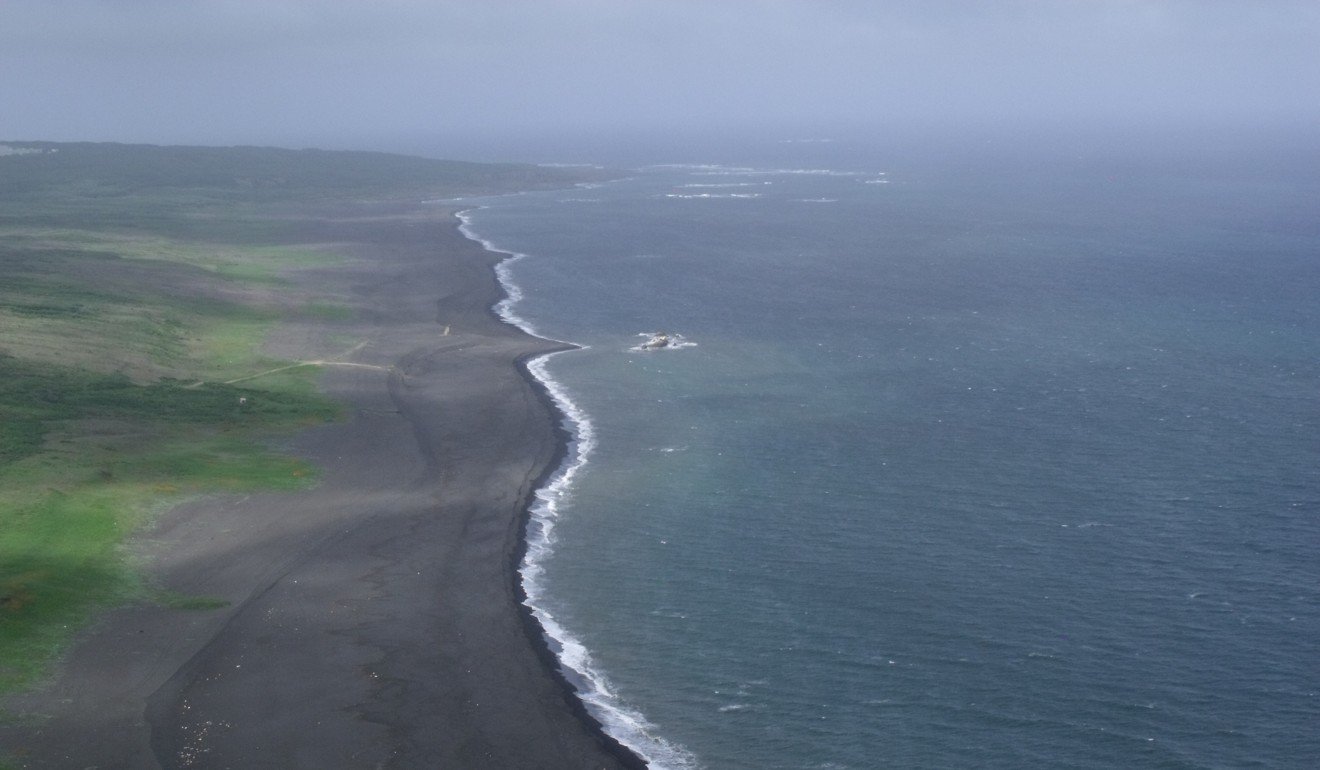
The unmistakable devastation of the attack and the huge naval gun inevitably draw the eye today, but Lieutenant Commander Toyohiro Kawamura of the Japan Maritime Self-Defence Force indicates a red-and-white striped pole topped with a limp white flag that stands in a scree slope at the very rear of the bunker. The flag was left when the last team sent out from Tokyo by the Ministry of Health, Labour and Welfare conducted their regular searches for human remains.
There are no clues to whether the remains beneath the flag are of a Japanese soldier or an American adversary, but they will be recovered by another team in the future.
Given the passage of time, it is likely the bones will only be positively identified if they are accompanied by a dog tag or some other unique memento a soldier might have carried to war, such as an engraved watch or ring.
Amid choking undergrowth just a few yards away is the angular outline of another blockhouse, and at the base of the slope is a large boulder that serves as a memorial to dozens of soldiers found in a mass grave just a couple of years ago. The rusted remains of a rifle have been placed at the spot.
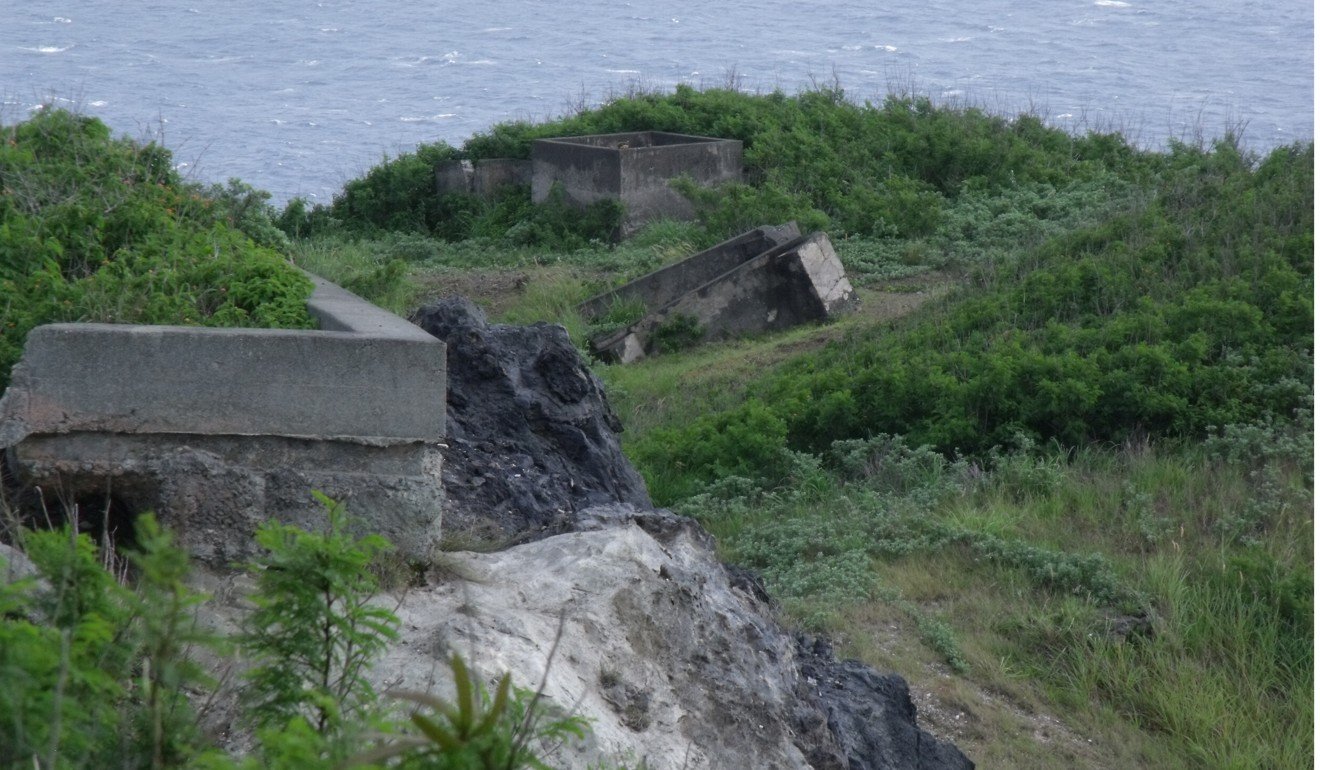
In truth, the work of the Japanese recovery teams may never be completed. Of the 22,000 Japanese soldiers stationed on this island when the first American troops waded ashore, only 1,023 were captured alive – few of them surrendered; most had been severely injured or concussed during combat. The bodies of 10,410 men were never recovered and still lie somewhere in the caves and trenches that were dug as fortifications or concealed by the dense brush.
Last year, two bodies were discovered 52 feet (16 metres) below the surface, close to the island’s main runway.
Equally, more than 70,000 US troops took part in the 36-day battle, with about 6,800 killed. Today, 151 are still officially listed as missing.
The United States occupied Iwo To until 1968, when it was returned to Japanese control. Given the dangers of countless rounds of ordnance left over from the fighting, as well as the constant threat of volcanic activity, the authorities decided not to permit the island’s former residents to return to their homes after the war. Instead, a military base was established with a small garrison, and the island is now officially off-limits. The only way to reach it today is with the Japanese or US military. Dwindling groups of former residents and veterans from both sides do so once a year to pay their respects.
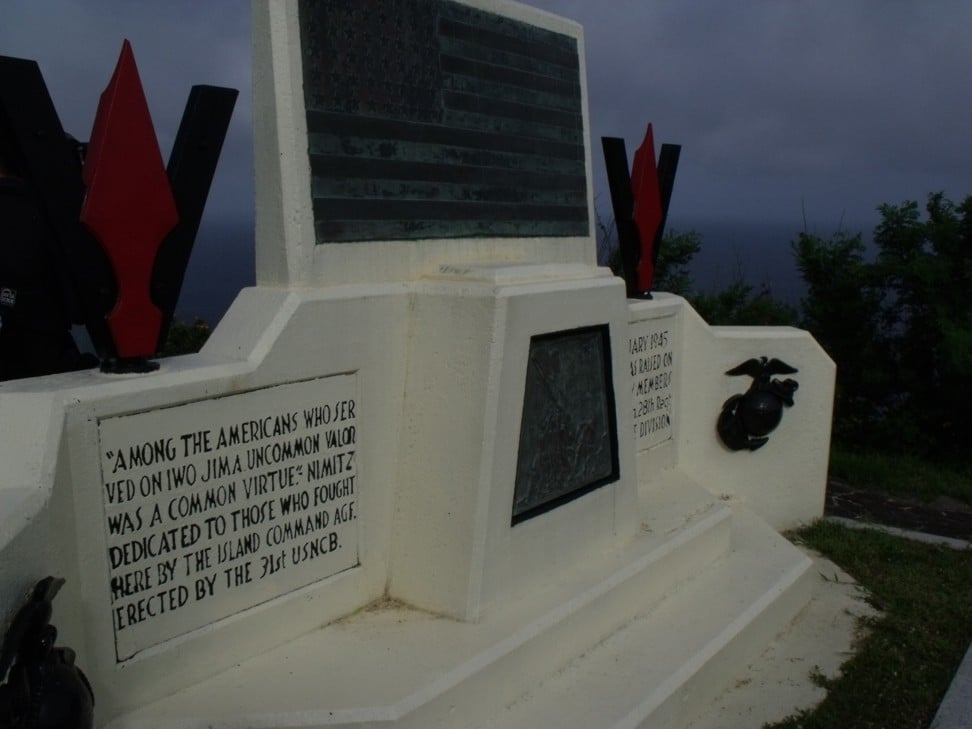
Iwo To translates as sulphur island and is to the south of the Bonin Islands, which lie about 1,000km directly to the south of Tokyo. At 169 metres, Mount Suribachi – the Japanese word for a grinding bowl – is the highest point on the island and is listed as a dormant vent to a larger and still active volcano.
From the lip of the crater, which has partially collapsed into the ocean on the western side, clouds of pungent sulphur rise from fissures, with the surrounding rocks stained a bright yellow. Looking out across the island, distinctive plumes rise from the undergrowth, and there are occasionally more serious eruptions of underground gases.

The island was home to just over 1,000 people before the war, dotted around in six settlements and eking a living by mining sulphur, growing sugar cane and fishing. The community had a primary school, a Shinto shrine and one police officer, and relied on the delivery of supplies of rice and other staples from the Japanese mainland every few months.
By 1944, however, it was clear that the tide of the war had turned decisively against Japan, and the civilian residents were evacuated because Tokyo recognised that Iwo To was critical to the defence of the homeland. The fall of the Mariana Islands – Guam, Tinian and Saipan – in the summer of 1945 enabled the US to deploy B-29 Superfortress bombers with the range to reach Japanese cities and carry out firebombing raids. Fighter planes operating from Iwo To’s airfields would be able to intercept inbound bombers and any stragglers as they returned to base after completing their missions.

Military planners also hoped to be able to commence bombing raids on Japan from the island once it was taken, and to deploy long-range fighters as escorts. Iwo To would also serve as a staging area for Operation Downfall – the eventual invasion of mainland Japan by the Allies.
For these reasons, planners drew up the details of Operation Detachment, estimating the island would be cleared of defenders in a week. US intelligence, however, had badly underestimated the tactics of lieutenant general Kuribayashi, who had eight months to build fortifications that included many kilometres of underground tunnels, bunkers and strongpoints.
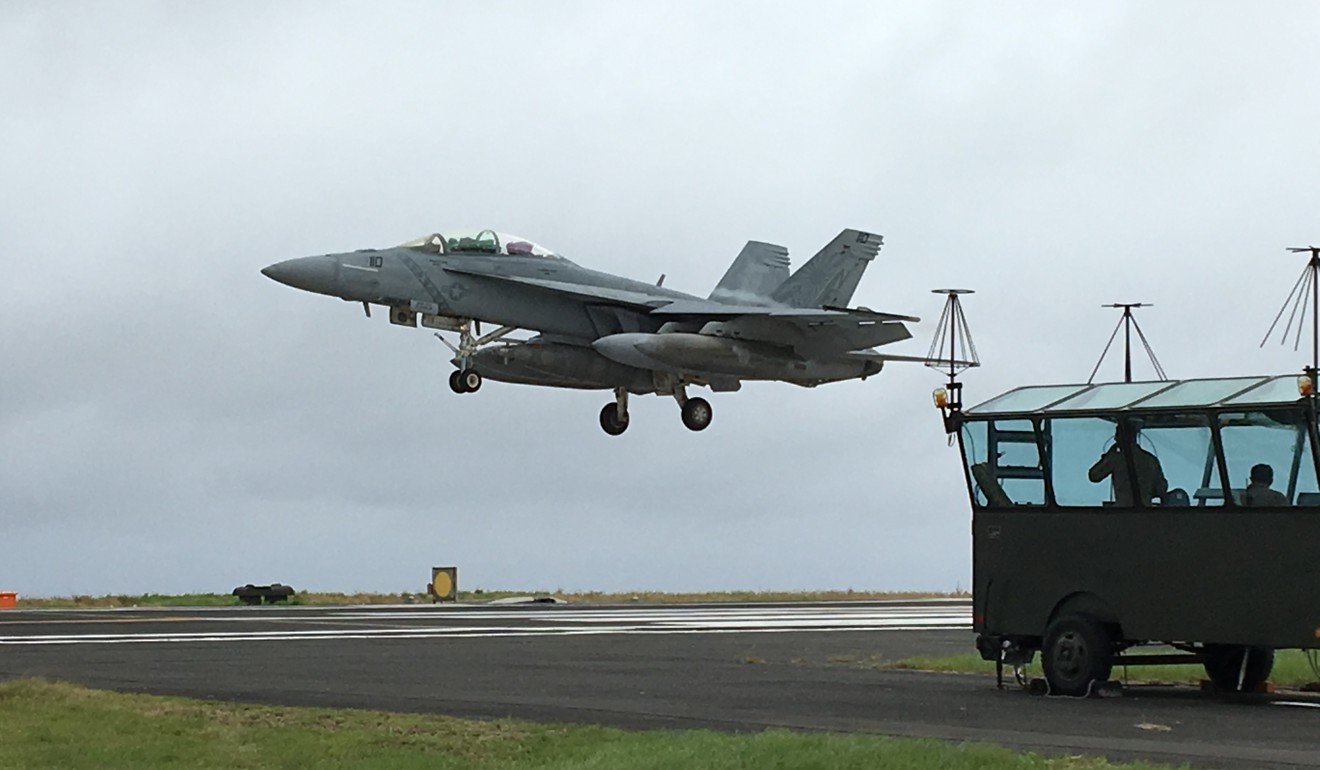
The tail of a crashed Japanese bomber was encased in concrete and turned into a makeshift fortification. Anti-tank ditches were excavated. Minefields were laid. Kuribayashi, who had cut his teeth in battle during the Japanese invasion of Hong Kong in December 1941, told his men they were not to surrender.
The US carried out nine months of bombing and naval bombardments against Iwo To – the longest “softening up” of an invasion target in the Pacific war – leading the planners to conclude that most of the Japanese garrison had been killed. They also mistakenly believed the landing beaches selected for the assault teams were firm and would be easy to cross for vehicles and marines laden with equipment. In reality, they were – and still are today – steep slopes of soft, black volcanic ash that do not provide a firm footing and are not suitable for protective foxholes.
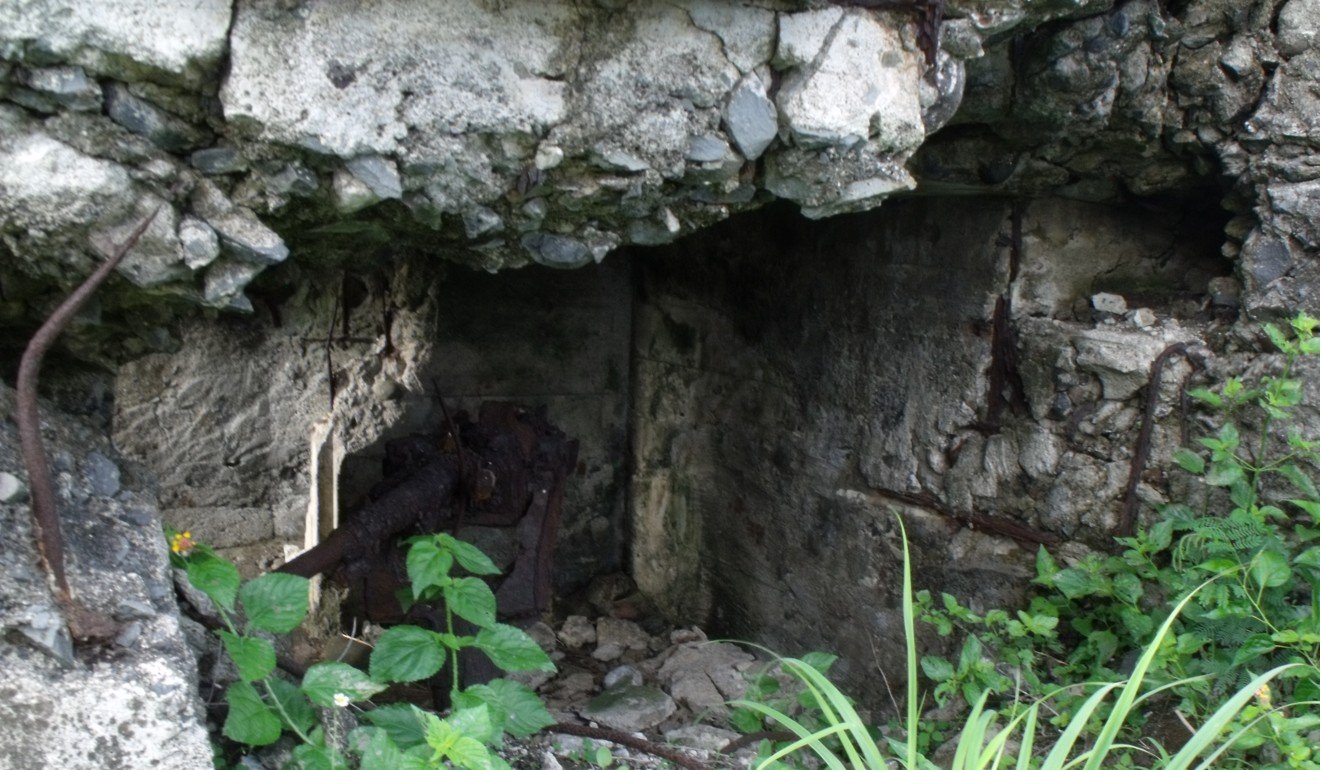
Unaware, Chester Nimitz, commander-in-chief of the US Pacific Fleet, went on record as saying: “Well, this will be easy. The Japanese will surrender Iwo Jima without a fight.”
They didn’t, even though Nimitz’s comment had appeared perceptive.
Instead of engaging the Americans as soon as they landed, Kuribayashi ordered his men to hold their fire for a full hour, until the beaches were heaving with American men and materiel. The slaughter that followed has gone down in Marine Corps lore.
Walking those same landing zones today, I find myself on Red Beach No 2, just to the east of Futatsu Rock offshore. It is impossible to comprehend what being here on February 19, 1945, must have been like. My feet sink into the coarse ash. Trying to climb a slope is an exercise in taking two steps forward and nearly two steps back. Every movement kicks up miniature hurricanes of blinding dust.

The marines did the same in full battle gear weighing almost as much as themselves. Faced with withering fire from concealed strongpoints, artillery positions to the rear and accurate strafing from the high ground of Mount Suribachi on their left flank, many died before even getting off the beach.
Robert Sherrod, correspondent for Time and Life magazines, described the assault as “a nightmare in hell”.
Over the following five weeks, the Americans inched forwards, taking a week to capture an airfield that had been confidently predicted to fall on the first day. They captured positions only to find them occupied again by Japanese defenders who had used tunnels to infiltrate behind US lines.

The marines were forced to use flame-throwers and grenades, while tanks were used to simply overrun and bury the men defending trenches. Eventually, weak from a lack of food and water, and short on ammunition, the Japanese were forced to launch waves of night-time banzai attacks that were only held off through a combination of US artillery support and the interlocking fire of carefully sited machine guns. Most Japanese soldiers fought to the death. The fate of Kuribayashi is unknown, although it is believed he led his men on one of the last suicide charges from his headquarters in the northeast of the island. His remains have never been positively identified.
Of all the images to come out of the savage fighting for Iwo To, none is more iconic than that of six marines raising the Stars and Stripes on Mount Suribachi on February 23. Taken by Joe Rosenthal, it won the Pulitzer Prize, and the men immortalised by planting the flag became the subject of the book Flags of our Fathers, by James Bradley – the son of a marine who was initially wrongly identified as one of the six. In 2006, the story was turned into a film directed by Clint Eastwood.

Of the soldiers in the image, three were killed in action within days.
The peak of Mount Suribachi can today be reached by a road, albeit one that has been buckled and twisted by constant subterranean movement. In 1945, the marines crawled to the top under constant fire from defenders in strongpoints and reinforced caves linked by a network of tunnels. Today, the flanks of the volcano are covered in dense scrub; back then they had been blasted down to bedrock by artillery.
At the very top is a small flat area with a series of memorials, both Japanese and American. A red-brown monolith bears Japanese characters meaning rest in peace, while a nearby monument has a map of Japan’s islands highlighted in different coloured stones. An incense holder, a bottle of tea and the rusted barrel of a rifle have been laid in front.
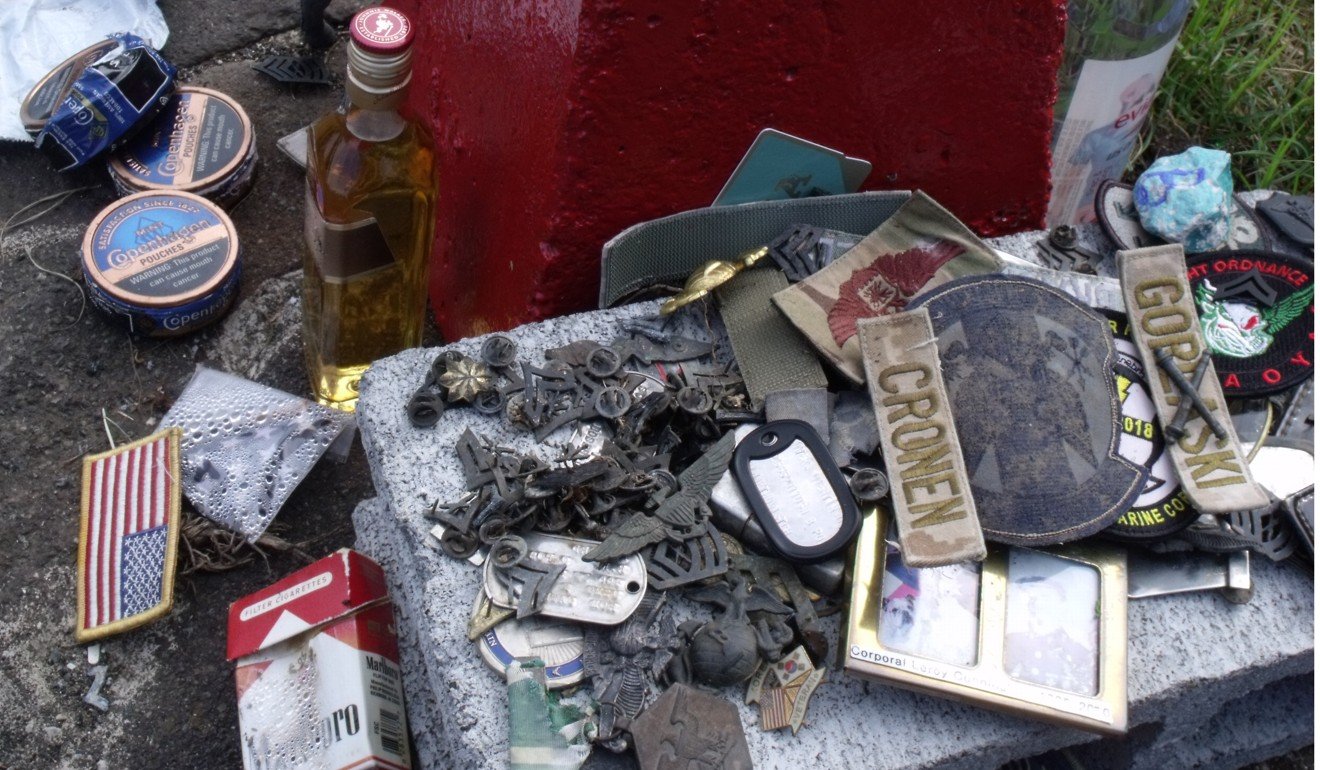
A short distance away and overlooking the invasion beaches is the US memorial. Whitewashed and bearing the globe, anchor and eagle motif of the Marine Corps, it shows metal depictions of the US flag and a version of the image of six marines raising it.
The memorial includes another quote from Nimitz, this one with the benefit of hindsight: “Among the Americans who served on Iwo Jima, uncommon valour was a common virtue.”
This is hallowed ground to the marines and any who set foot on Iwo To are duty-bound to stop and pay their respects. Directly in front of the memorial are a couple of posts surrounded by offerings of cigarettes and whiskey, chewing-tobacco and water. Military unit insignia and badges of rank rest atop one another. The posts are draped with dozens of dog tags bearing names such as Hiller, Byre, Seacrest and Rossant, all stamped with “USMC”. ■

